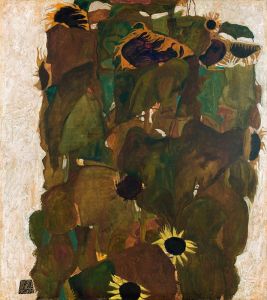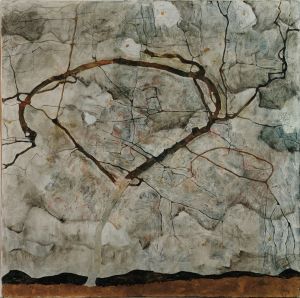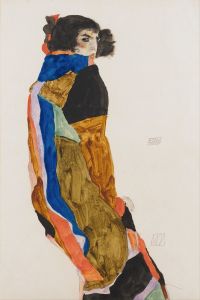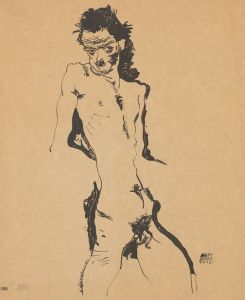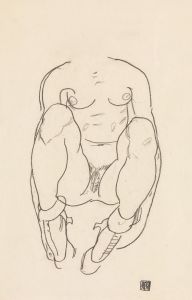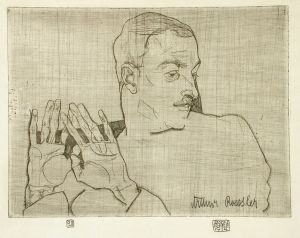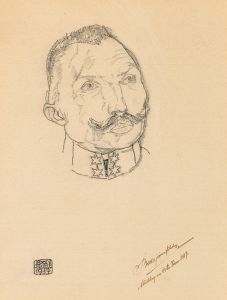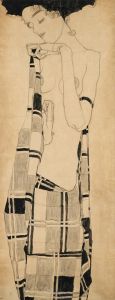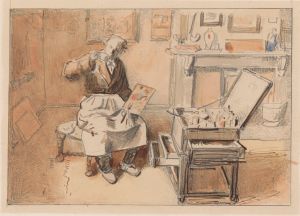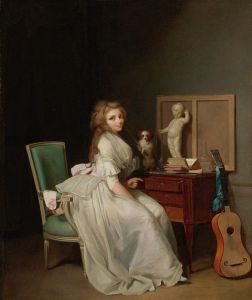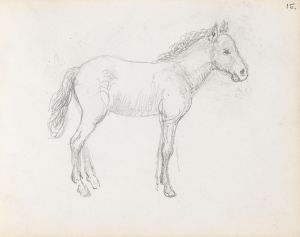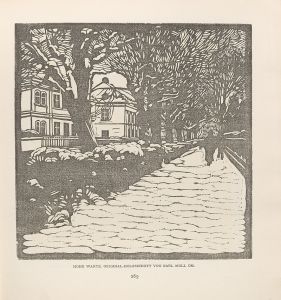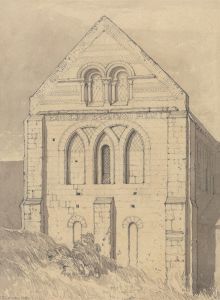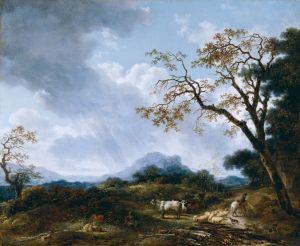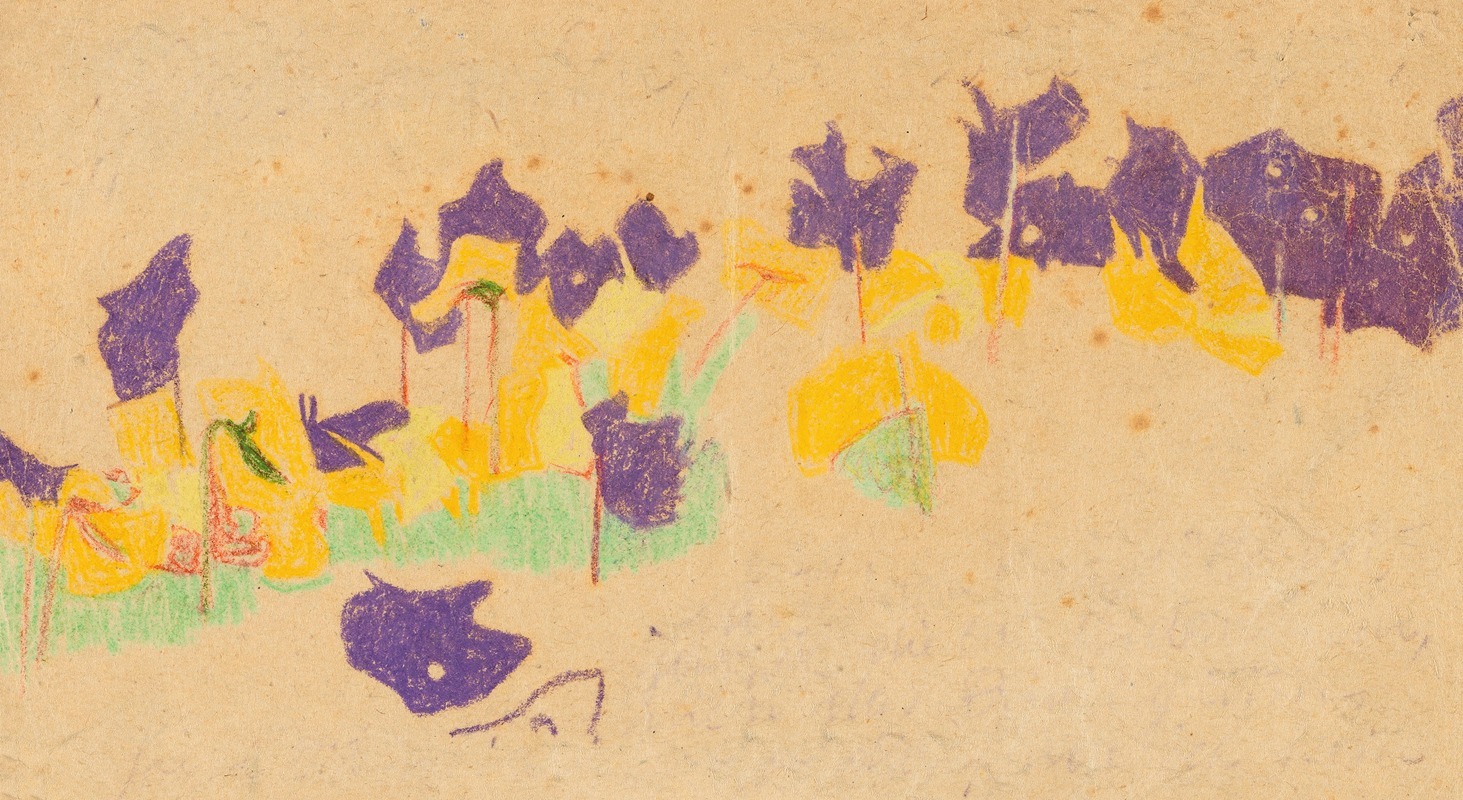
Blumen im Schlossgarten Krumau
A hand-painted replica of Egon Schiele’s masterpiece Blumen im Schlossgarten Krumau, meticulously crafted by professional artists to capture the true essence of the original. Each piece is created with museum-quality canvas and rare mineral pigments, carefully painted by experienced artists with delicate brushstrokes and rich, layered colors to perfectly recreate the texture of the original artwork. Unlike machine-printed reproductions, this hand-painted version brings the painting to life, infused with the artist’s emotions and skill in every stroke. Whether for personal collection or home decoration, it instantly elevates the artistic atmosphere of any space.
Egon Schiele, an Austrian painter known for his distinctive style and contribution to early 20th-century art, created the painting "Blumen im Schlossgarten Krumau" (Flowers in the Castle Garden, Krumau) in 1910. This work is part of Schiele's broader exploration of landscapes and nature, which he often depicted with a unique blend of expressionism and symbolism.
Schiele was born in 1890 in Tulln an der Donau, Austria, and he showed an early interest in art. He studied at the Vienna Academy of Fine Arts but soon became dissatisfied with the conservative approach of the institution. Influenced by the works of Gustav Klimt, Schiele developed his own style characterized by bold lines, expressive forms, and a focus on the psychological depth of his subjects.
"Blumen im Schlossgarten Krumau" reflects Schiele's fascination with the town of Český Krumlov (referred to as Krumau in German), located in what is now the Czech Republic. Schiele had familial ties to the area, as his mother was from Krumlov, and he spent some time there during his life. The town's medieval architecture and picturesque landscapes provided rich inspiration for his work.
In this painting, Schiele captures a scene from the castle garden in Krumau, focusing on the vibrant and colorful flowers. His approach to depicting nature was not to replicate it realistically but to convey an emotional and subjective experience. The flowers in the painting are rendered with bold, expressive brushstrokes and a vivid color palette, emphasizing their vitality and the dynamic energy of the natural world.
Schiele's landscapes, including "Blumen im Schlossgarten Krumau," often feature a sense of movement and tension, achieved through his use of line and color. The painting exemplifies his ability to transform a simple garden scene into a complex composition that invites viewers to engage with the emotional resonance of the environment.
The period during which Schiele painted "Blumen im Schlossgarten Krumau" was marked by significant personal and artistic development. In 1910, he was beginning to establish himself as a prominent figure in the art world, participating in exhibitions and gaining recognition for his innovative style. This painting is part of his early body of work, which laid the foundation for his later, more mature pieces.
Schiele's work, including "Blumen im Schlossgarten Krumau," is celebrated for its contribution to the expressionist movement and its influence on subsequent generations of artists. His ability to convey complex emotions and psychological depth through his art has left a lasting impact on the art world.
Today, Egon Schiele is regarded as one of the leading figures of Austrian expressionism, and his works are held in high esteem by art historians and collectors alike. "Blumen im Schlossgarten Krumau" remains an important example of his early exploration of landscape and nature, showcasing his distinctive style and artistic vision.





